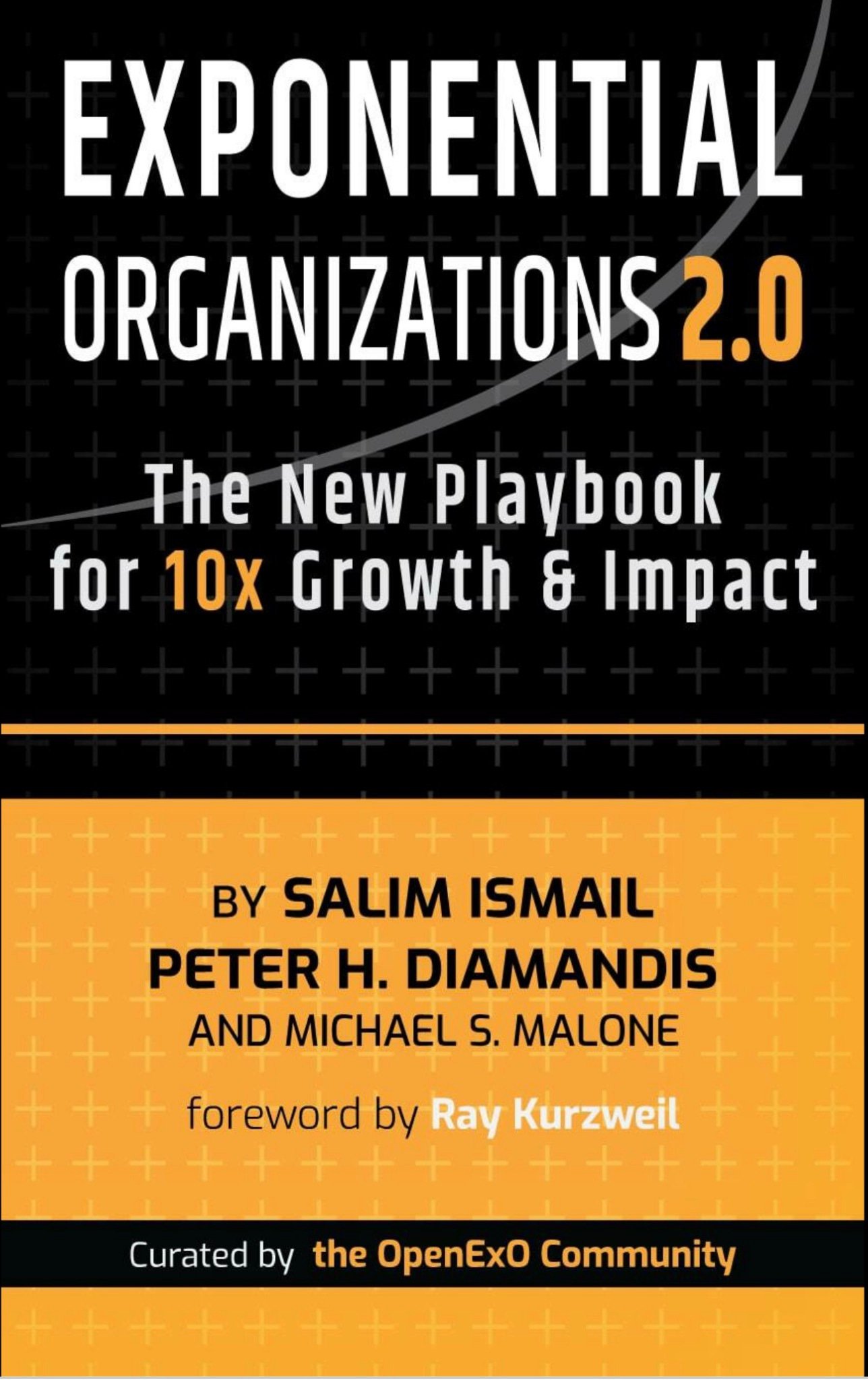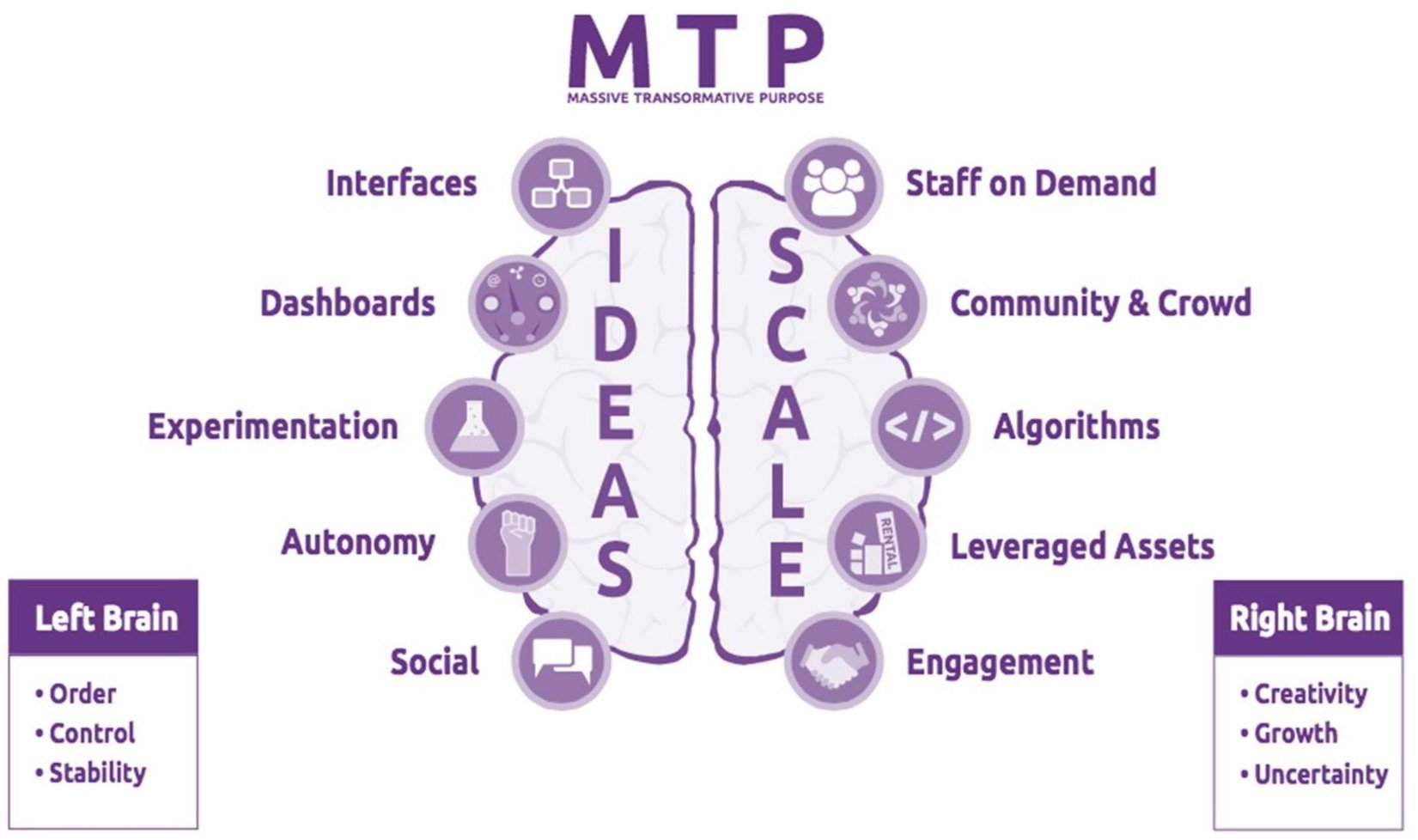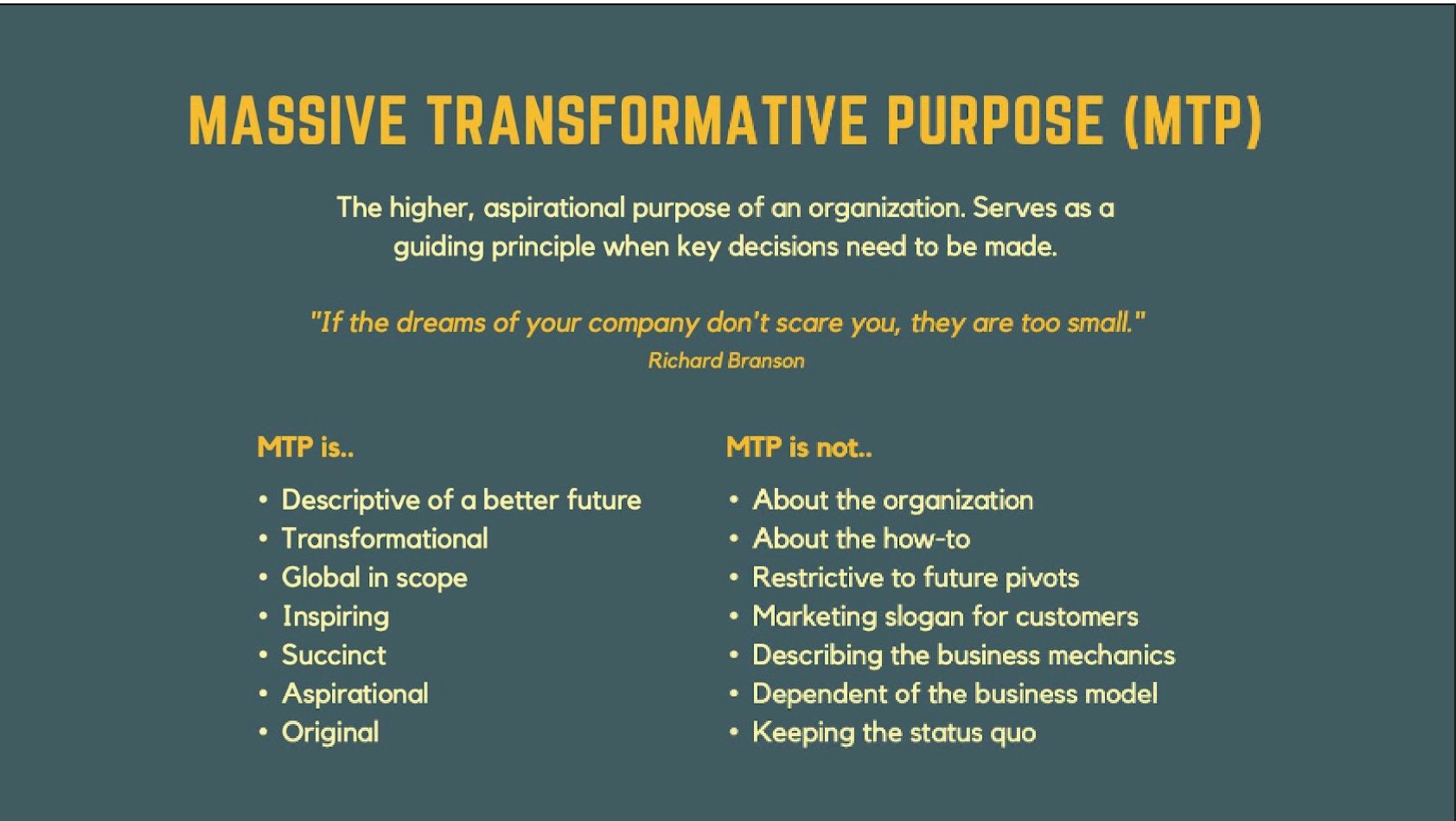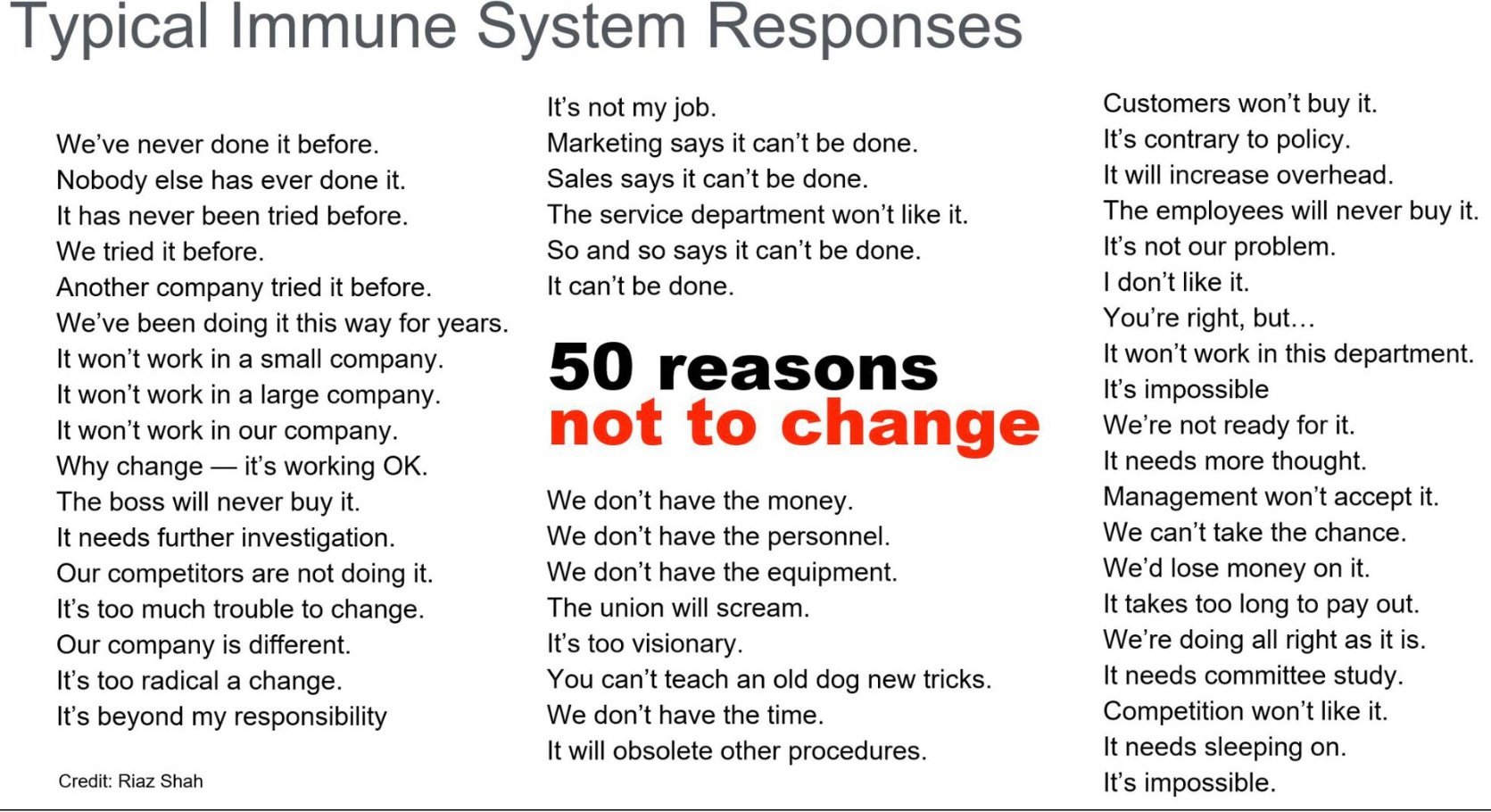Rishad Tobaccowala: Exponential Organizations
The Future Does Not Fit in the Containers of the Past. Edition 148.
Earlier this week (June 6, 2023), a new book called Exponential Organizations 2.0 by Salim Ismail, Peter Diamandis and Michael Malone was made available.
Every subscriber of this thought letter regardless of whether one is employed by a firm, self-employed, unemployed or even retired is likely to benefit by reading this book.
It will stretch your mind and make you re-think a lot of things about firms and work and the future. There will be parts that may surprise you and parts that may anger you. You may nod along and occasionally fly into rage wondering if the authors have tripped into the light fantastic.
The book is filled with examples, charts, data, and graphs and step by step exercises and recommendations that you will be able to leverage as you manage your career, your team, and your firm.
You can own it and read it now on any device that supports the Kindle app for only 99 cents here
The Changing Nature of a Firm.
Ronald Coase an economist from the University of Chicago won the Nobel Prize in part for his rationale that firms exist because internal transaction costs are lower than external transaction costs.
In short, despite internal bureaucracy and red tape and processes, large firms endured because no matter how bad the internal friction it was often less than the friction of negotiating and setting up each transaction necessary to get a job done with outside parties.
But then…
In the US in the three years beginning in February 2020, small establishments—locations with fewer than 250 employees—have hired 3.67 million more people than have been laid off or who quit. Larger establishments—those with 250 employees or more—have cut a net 800,000 job (and this was before the huge layoffs at the large tech companies). That is according to data from the government’s Job Openings and Labor Turnover Survey.
A combination of enabling technologies including mobile computing, new marketplaces (Amazon Web Services, Shopify, Upwork) that allow for easy access to scaled resources through an API, a changing work force (free-lancers will outnumber full time employees next year in the US) and new mindsets (76% of Gen-Z want to be their own boss) have made Coase’s law less relevant than it was before.
Now combine the changes we have lived through in the past two decades with the disruptions of Covid-19 and the huge emerging technology platform shifts driven by AI, AR/VR, Blockchain and 5G-- all of which massively empower individuals and small agile teams-- and the nature of firms will change.
Large firms will continue to endure because in many cases scale, capital and other resources are better allocated and utilized with such structures, but these firms will increasingly work in radical new ways which include becoming flatter, faster, enabling fewer and fewer full time employees than ever before.
In 2020, the Amsterdam based banking and financial company the ING Group with over a trillion dollars of assets decided the future was going to require much more autonomous ways of working and decided to develop a transformative new model. The asked each employee to re-apply for to the company if they were interested in the new ways of working which reduced the number of mangers, removed the ability to delegate tasks that you should do to others and required constant shapeshifting. Nearly one third of the employees quit and the following year ING delivered the same results with the remaining two thirds of employees.
Many firms have begun to realize that the future does not fit in the containers of the past and most organizations may have been built for yesterday rather than the very different challenges of today and the amazing opportunities of tomorrow.
The new firm will be an Exponential Organization 2.0 which the authors define as
A purpose-driven, agile, and scalable organization that uses accelerating technologies to digitize, dematerialize, democratize, and demonetize its products and services, resulting in a 10x performance increase over its non-ExO peers.
The Key Drivers of An Exponential Organization
The chart above is a map of the terrain that forms the Exponential Organization 2.0.
It all begins with a Massive Transformational Purpose which is defined as “the core reason for the firm’s existence. It is the foundation upon which all the company actions take place. It establishes a long-term goal for the company that is so sweeping and profound that it is always within reach yet always unreachable. It sets a moral foundation for all company interactions between stakeholders. It keeps the company disciplined and on target. It inspires employees and customers. And it galvanizes employee morale and retention.”
Here are some examples of MTP’s:
Google: Organize the world’s information.
Uber: Go anywhere. Get anything.
Danone: Bring health through food.
Spanx: Elevating Women.
It is key to determine a massive transformational purpose (MTP) for an ongoing firm and should be something every new business should figure out at launch.
The other two factors that drive new organizational design are external facing ones (SCALE) which is how the firm connects with the outside world and internal facing ones which are the key factors that the firm should run the business internally (IDEAS).
Connecting Externally: SCALE
Staff On Demand: Projects should be staffed, and work done by putting together teams of pre-qualified workers hired on a as-need basis. These individuals could be self-employed, free-lance, procured from third parties such as Upwork and other contracting , or even full-time employees who are re-aggregated around the jobs that need to be done and then dissolve post the job. Think how talent comes together in Hollywood around a tv show or project or consultants move from assignment to assignment at a Bain or McKinsey depending on their skills and the assignment.
Community and Crowd: Communities are built around users, customers, alumni as well as vendors, suppliers and fans who are aligned with the massive transformational purpose who are granted special favors, given insider insights and forward look on future offerings and rewarded with gifts and trust. While they are not employees, they are pseudo employees, citizens of the firm’s larger community. Companies like Peloton and Apple of leveraged community from key developers to super and early fans. Community is often sourced from crowds. With most of the worlds 8 billion people connected online one can leverage crowds to grow a company and find community as TikTok did in entertainment and Kiva in finance and GoFundMe in fund raising.
Algorithms and AI: Both technologies allow for massive research, fast pattern matching, massive experimentation and more and will turbo-charge talent and company design.
Leveraged Assets: Increasingly companies will be asset light using APIs to access what they need when they need it whether it be compute power, manufacturing, or distribution. Cloud based computing is a common form of a leveraged asset.
Leveraged significantly reduce the need for capital, cost of carrying inventory and risk of obsolete technology.
Engagement: Engagement is the use of techniques like gamification, incentive prizes, and recently crypto economics like NFT’ s to keep stakeholders interested, involved and increasingly committed to a shared purpose. Examples include how Reddit uses its members to vote up or down on submitted content. It’s the classic example of reciprocity Engagement: if you share content you can access content which drives engagement of community and crowd.
Connecting Internally: IDEAS
Interfaces: Interfaces are the matching and filtering processes that allow a firm to translate the abundance of data into precise and meaningful information that can be acted on. For instance Shopify has created a number of interfaces that allow its customers to access all of its SCALE attributes which is it’s community, it’s AI, it’s external and internal talent and its assets so that an individual can find an eco-system of third party functions to help them sell as well as buyers for their products and services.
Dashboards: Dashboards are the internal and external presentation of real time objectives and key results (OKR’s) a company needs to operate. These include everything from leader boards and other data for users to internal metrics to drive the firm such as monthly recurring revenue (MRR), Customer Acquisition Cost (CAC), Life-Time Value (LTV), Margin, Churn, Net Promoter Score etc. These dashboards constantly allow a company to re-allocate resources, change marketing plans, re-price products and navigate the firm.
Experimentation: In a fast-changing world experimentation and iteration is the only way. Experimentation is a key to make data driven decisions even about innovation and creativity. By trying different approaches and A/B testing, measuring quickly, failing fast and honing and building on success a company can speed and scale rapidly.
Autonomy: Some of the biggest drawbacks of large organizations are bureaucracy where there are scores of people empowered to say no and very few who can say yes, decision makers far from the customer or the marketing battlefield and an entire ethos of giving “good meetings” and “butt covering” versus making shit happen. Autonomy challenges this via an approach characterized by self-organized, multi-disciplinary teams that operate with de-centralized authority all focusses on hitting the company OKR’s, Massive Transformational Purpose and Moonshots.
Social: Social technologies accelerate conversations and therefore learning cycles. These include communication tools like Slack, Zoom and Google Docs, collaboration tools like Asana and Jira and workflow management tools like Dropbox. There are ranges of tools from Canva a collaborative graphics tool to Miro board that allow virtual white boarding.
The Imperative of Transformation
We have entered the dawn of a new era whether one is a CEO, or an intern, a gig worker or an investor will need to twist themselves and their organization into new shapes to continue to thrive in the future.
The ability to exponentially grow is now possible for every person and firm where most external barriers, excuses and obstacles are being dissolved away and our ability to change will make us grow while staying the course will likely see us going the way of Blackberry, Kodak.
No great talent or company is defeated.
They defeat themselves.
By failing to change and adapt and re-invent.





